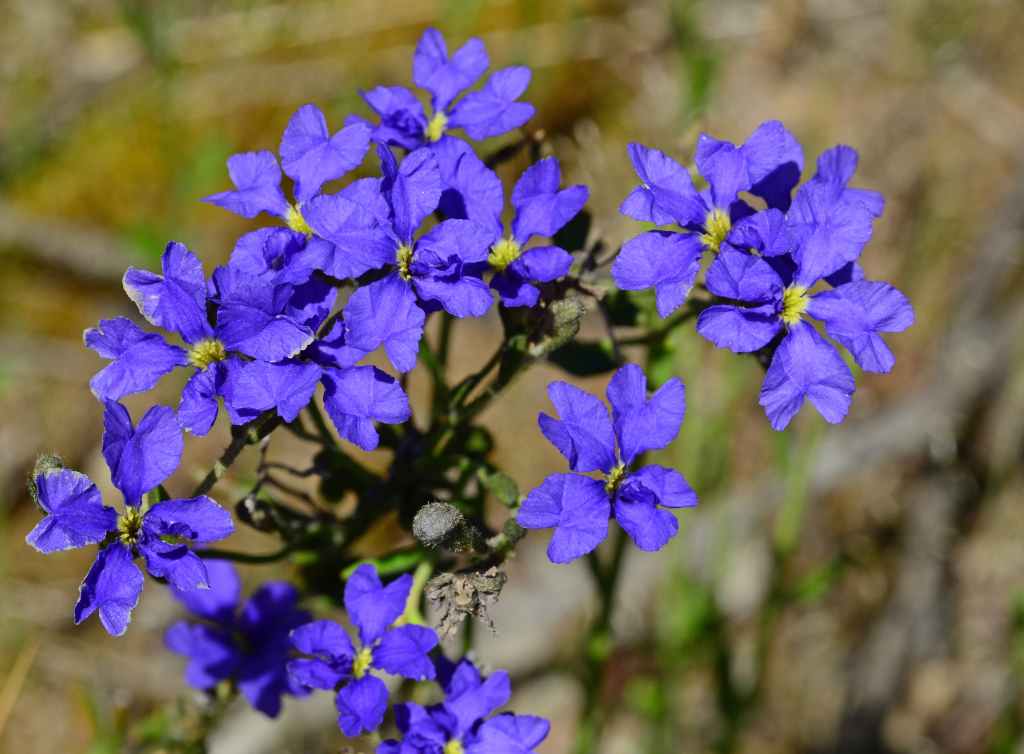Dampiera dysantha
(Benth.) Rajput & Carolin Shrubby DampieraErect or decumbent subshrub to 70 cm high; stems terete, deeply ribbed, sparsely white-tomentose with branched hairs, particularly in grooves, glabrescent with age. Leaves sessile, oblong-elliptic, 5–16 mm long, 2–6 mm wide, upper surface glabrous or glabrescent, papillate, lower surface tomentose, margins entire or toothed, usually revolute but not concealing lower surface. Inflorescence branches 5–7-flowered, 1–3 together in upper axils, with rusty and grey branched hairs; peduncles 11–17 mm long; pedicels 1–2 mm long; bracteoles linear-oblong, 3–4.5 mm long. Sepals 0.2–0.5 mm long, tomentose; corolla 9–11 mm long, blue or rarely lilac or white inside, rusty- and grey-tomentose outside, wings 1.7–2.2 mm wide. Fruit obovoid, 2–4 mm long, grey-tomentose. Flowers mainly Aug.–Nov.
LoM, MuM, Wim, VVP, VRiv, Gold, CVU, GGr, DunT. Also SA. Scattered in western Victoria in a belt between the Little Desert and the Bendigo area where found in woodland and mallee communities, often on heavier loam or clayey soils. An old collection purportedly from near Daylesford is of dubious provenance.
Jeanes, J.A. (1999). Goodeniaceae. In: Walsh, N.G.; Entwisle, T.J., Flora of Victoria Vol. 4, Cornaceae to Asteraceae, pp. 589–615. Inkata Press, Melbourne.
 Spinning
Spinning

